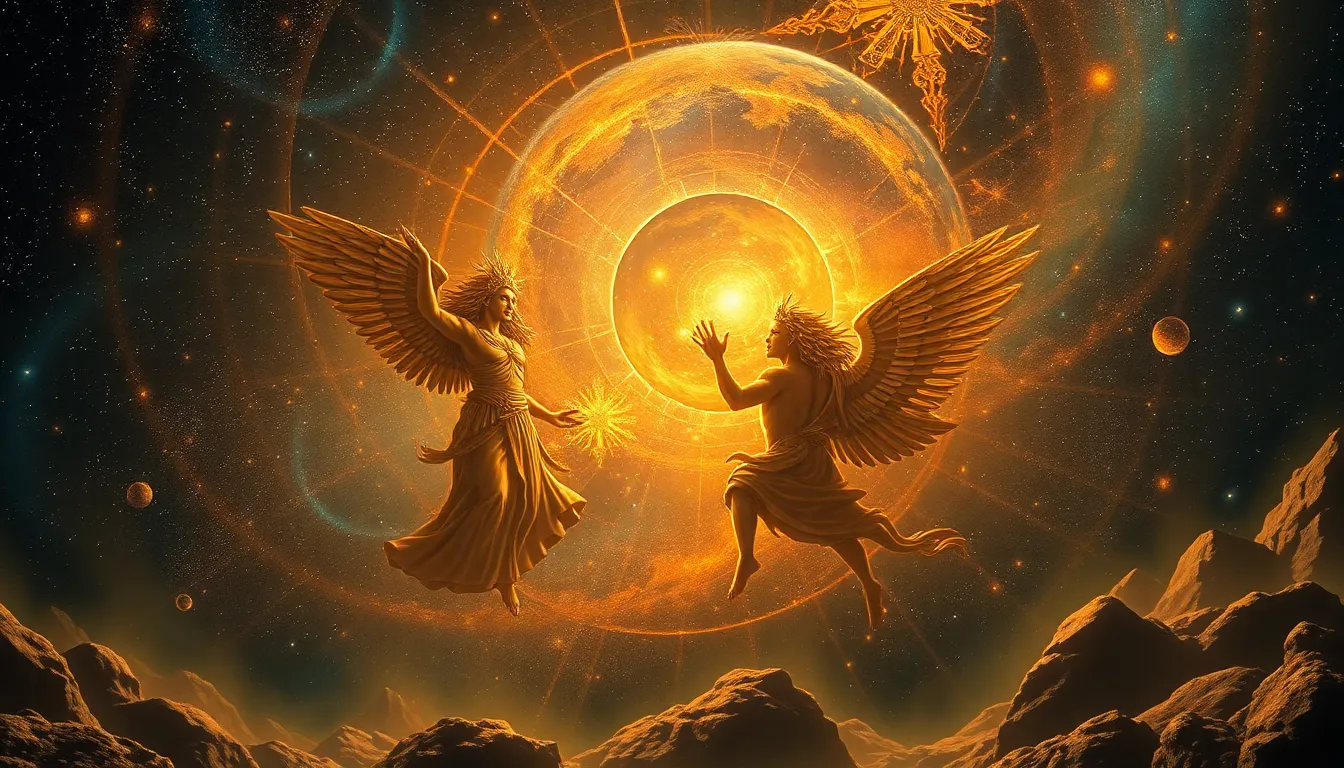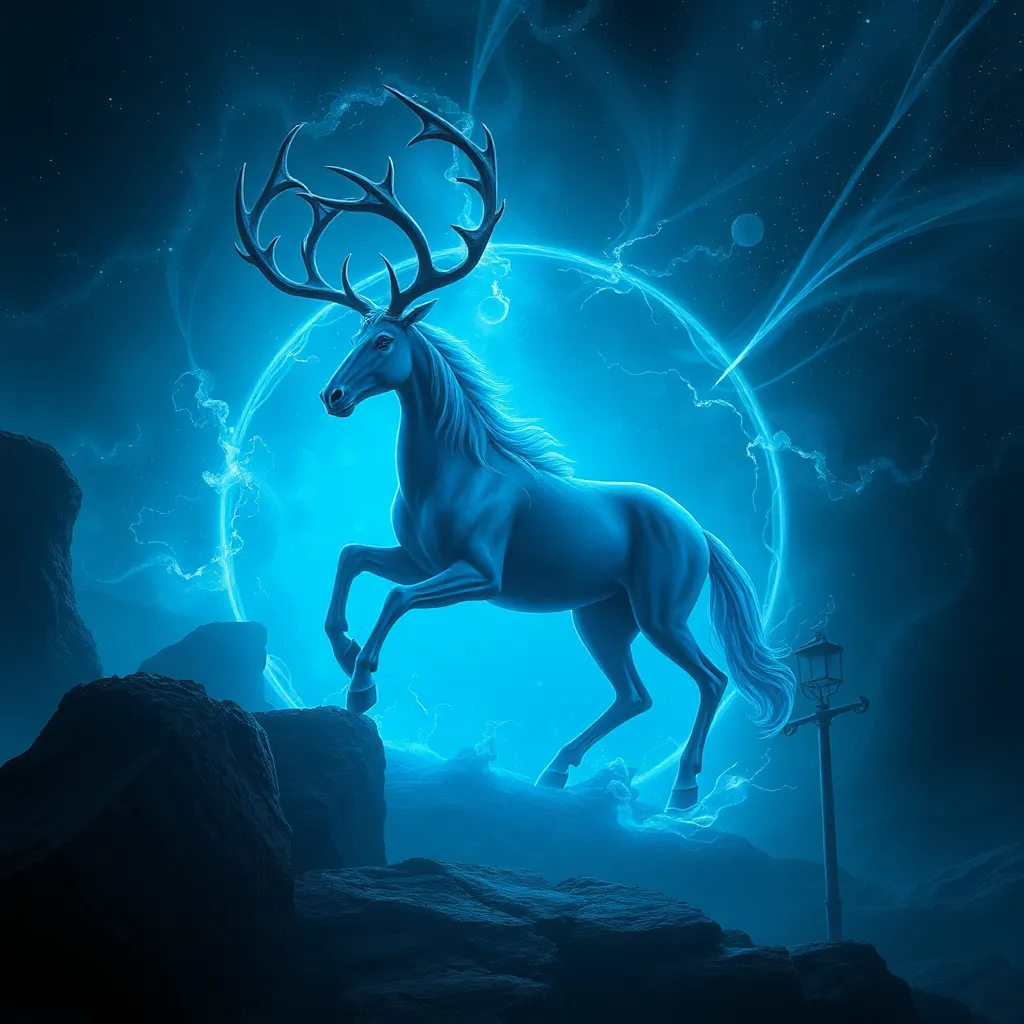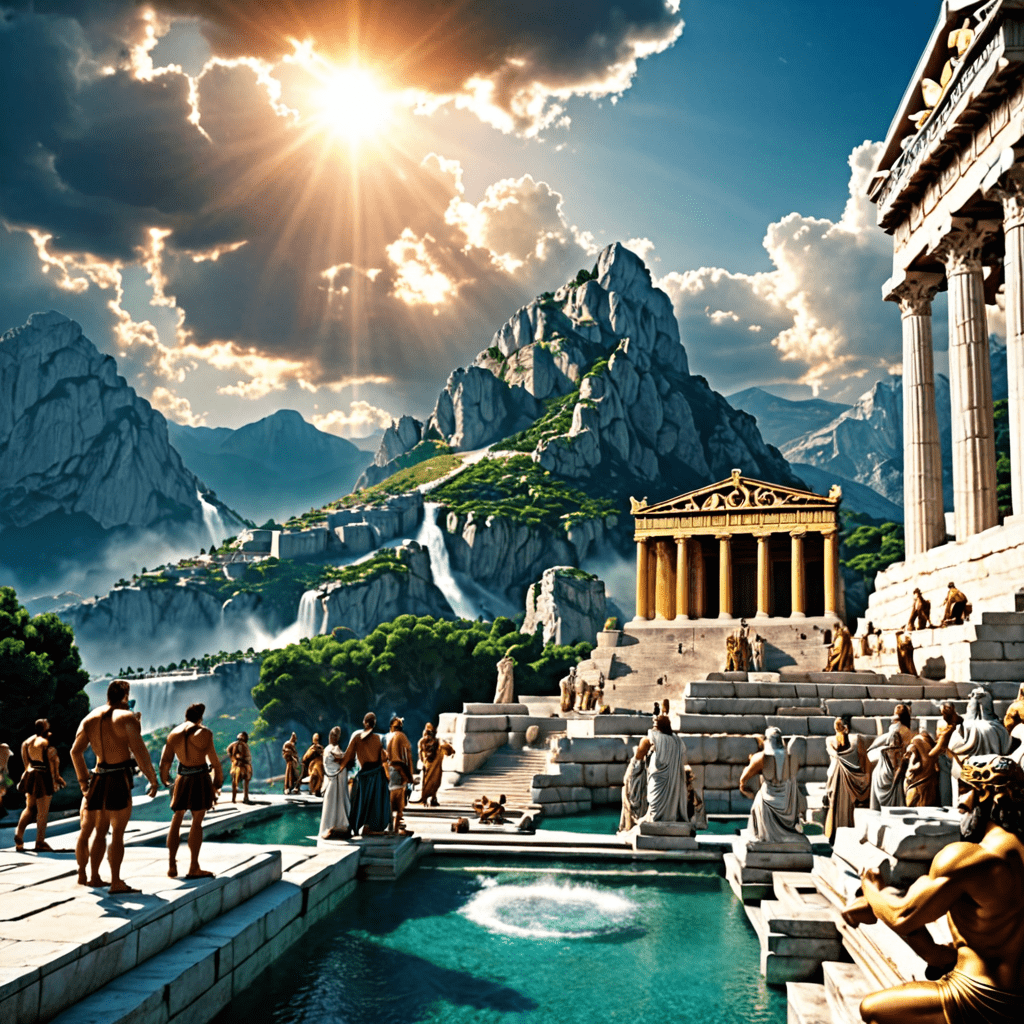Ancient Deities and Their Cosmic Connections: Myths of the Stars
I. Introduction
Throughout history, ancient civilizations have revered their deities, weaving complex narratives that intertwined their gods with the cosmos. These deities served not only as figures of worship but also as symbols of humanity’s quest for understanding the universe. The stars, planets, and celestial phenomena were often perceived as manifestations of divine will, guiding people in their daily lives and spiritual practices.
The relationship between mythology and astronomy is profound, as ancient cultures utilized celestial observations to inform their myths. The movements of celestial bodies were often mirrored in the stories of gods and goddesses, creating a rich tapestry of cosmic significance. This article explores the myths of the stars through the lens of ancient deities, uncovering how these narratives shaped the understanding of the universe in various cultures.
II. The Role of Astronomy in Ancient Civilizations
Astronomy played a crucial role in the development of ancient civilizations. It was essential for navigation, agriculture, and timekeeping, allowing societies to flourish in harmony with the natural world.
- Importance of Celestial Navigation: Ancient mariners relied on the stars for navigation, using constellations to guide their voyages across vast oceans.
- Timekeeping: Many cultures developed calendars based on lunar and solar cycles, which were crucial for agricultural planning.
Different cultures integrated astronomy into their religious practices, with celestial events often linked to divine activities. The Babylonians, for example, meticulously recorded celestial movements, believing they foretold the will of the gods.
Examples of ancient civilizations with robust astronomical knowledge include the Egyptians, Mayans, and Greeks, each of whom contributed significantly to the understanding of the cosmos.
III. The Ancient Egyptian Pantheon and the Stars
The ancient Egyptians had a rich pantheon, with key deities such as Ra, Osiris, and Isis closely tied to celestial phenomena. Ra, the sun god, was believed to travel across the sky in a solar barque, while Osiris, associated with the afterlife, was connected to the constellation Orion.
The significance of the constellation Orion was profound; it was linked to the annual flooding of the Nile, which was vital for agriculture. The Egyptians believed that the soul of Osiris resided in Orion, and its appearance in the sky signaled the time for planting crops.
The Pyramid texts, ancient funerary inscriptions, also reveal astronomical alignments, with many pyramids oriented towards specific stars. These alignments reflected the Egyptians’ belief in the afterlife and the connection between the stars and the divine.
IV. Greek Mythology: Stars as Divine Narratives
In Greek mythology, major gods and goddesses were closely associated with constellations. Zeus, the king of the gods, was often linked to the constellation Sagittarius, while Hera was associated with the nearby constellation Corona Borealis.
The myth of the Pleiades is particularly notable, as it tells the story of seven sisters who were transformed into stars. Their rising in the spring was a signal for farmers to begin planting crops, illustrating the connection between celestial events and agricultural cycles.
The influence of Greek astronomy extended far beyond their civilization, shaping the astronomical practices of later cultures, including the Romans and medieval scholars. Their myths and celestial associations continue to resonate in modern astronomy.
V. Mesopotamian Deities and Celestial Bodies
The Mesopotamian pantheon included prominent deities such as Enlil, Inanna, and Marduk, each with significant connections to celestial bodies. For instance, Inanna, the goddess of love and war, was associated with the planet Venus, which was often viewed as a divine messenger.
Astrology played a central role in ancient Mesopotamian society. Celestial events were interpreted as divine messages, guiding kings and priests in their decisions. The Babylonians meticulously recorded the movements of celestial bodies, believing that their patterns reflected the will of the gods.
VI. The Cosmic Connection in Hindu Mythology
In Hindu mythology, key deities such as Vishnu and Shiva have celestial representations, reflecting the profound connection between the divine and the cosmos. The concept of Nakshatras, or lunar mansions, holds great astrological importance in Hindu astrology, dividing the sky into 27 segments associated with various deities.
The epic Mahabharata also contains cosmic themes, showcasing the interplay between divine forces and the natural world. The celestial battles and alignments described in the text highlight the significance of astrology in shaping human destiny.
VII. Indigenous Mythologies and Stellar Narratives
Indigenous cultures around the world have their own rich traditions of star myths. These narratives often reflect local geography and seasonal changes, imparting wisdom and guidance to their communities.
- Connection Between Local Geography and Celestial Stories: Many indigenous peoples used the stars to navigate and mark seasonal changes, tying their myths directly to the land.
- The Significance of the Milky Way: In Native American mythology, the Milky Way is often seen as a river or path connecting the earthly realm to the divine, filled with stories and lessons.
VIII. The Influence of Ancient Astral Myths on Modern Astrology
The ancient deities and their celestial associations continue to shape contemporary astrological practices. Many modern astrologers draw upon the myths and symbolism of ancient gods in their interpretations of astrological charts.
The survival of these ancient myths in modern star charts is evident, with many constellations retaining their mythological names and stories. However, it is essential to approach these interpretations with sensitivity to cultural appropriation and the reinterpretation of ancient beliefs.
IX. Comparative Analysis of Cosmic Myths Across Cultures
A comparative analysis of cosmic myths across different cultures reveals both unique perspectives and shared themes. While the deities and stories vary, the fundamental human desire to understand the cosmos and its connection to the divine remains constant.
- Universal Themes: Many cultures share themes of creation, celestial navigation, and divine influence, reflecting a collective human experience.
- Diversity of Narratives: The specific myths and deities may differ, but they often serve similar purposes in explaining natural phenomena and guiding human behavior.
In conclusion, the exploration of ancient deities and their cosmic connections offers a fascinating glimpse into how humanity has sought to understand its place in the universe. These myths not only enriched cultural identities but also provided frameworks for navigating the complexities of life, demonstrating the enduring power of storytelling in the face of the cosmos.


